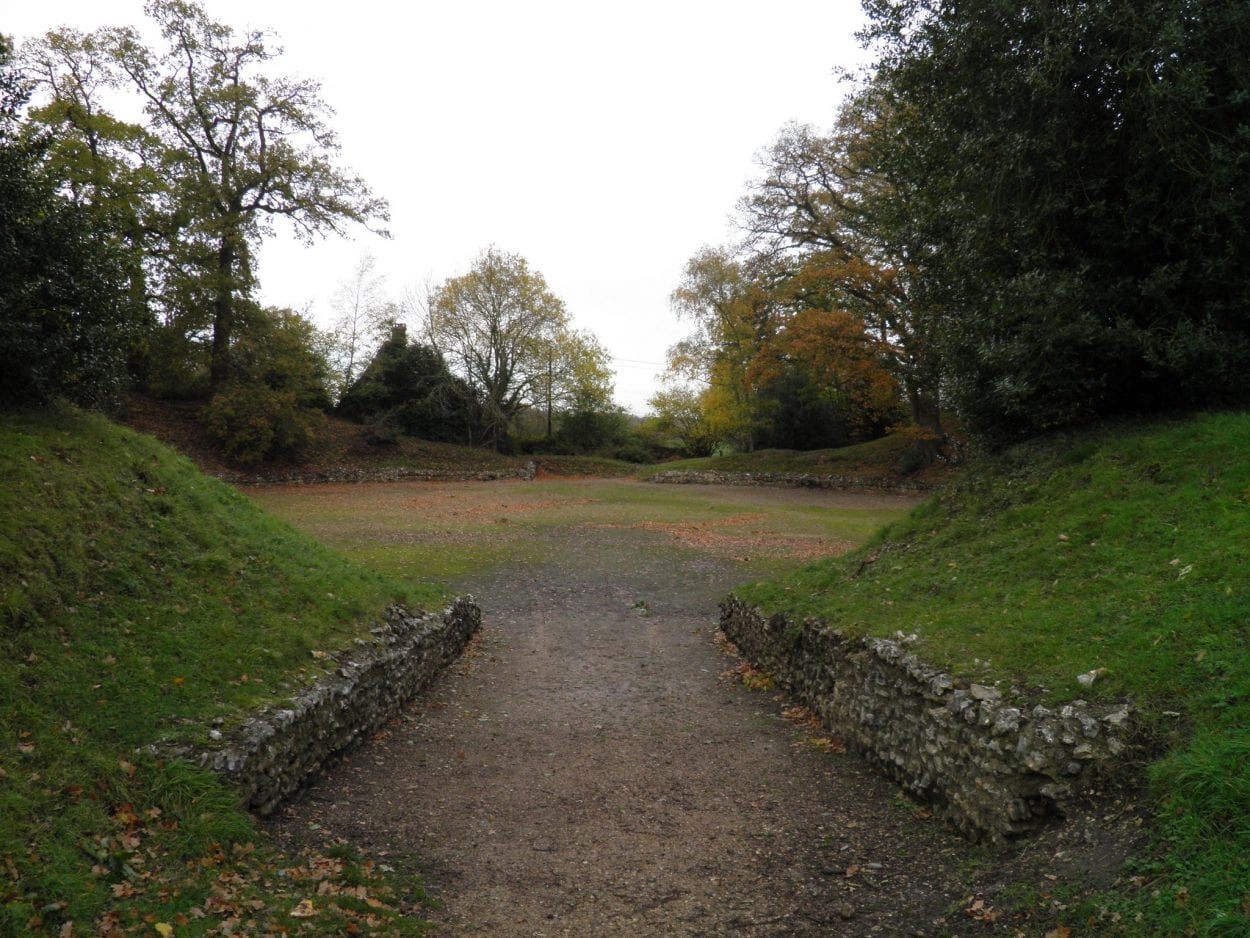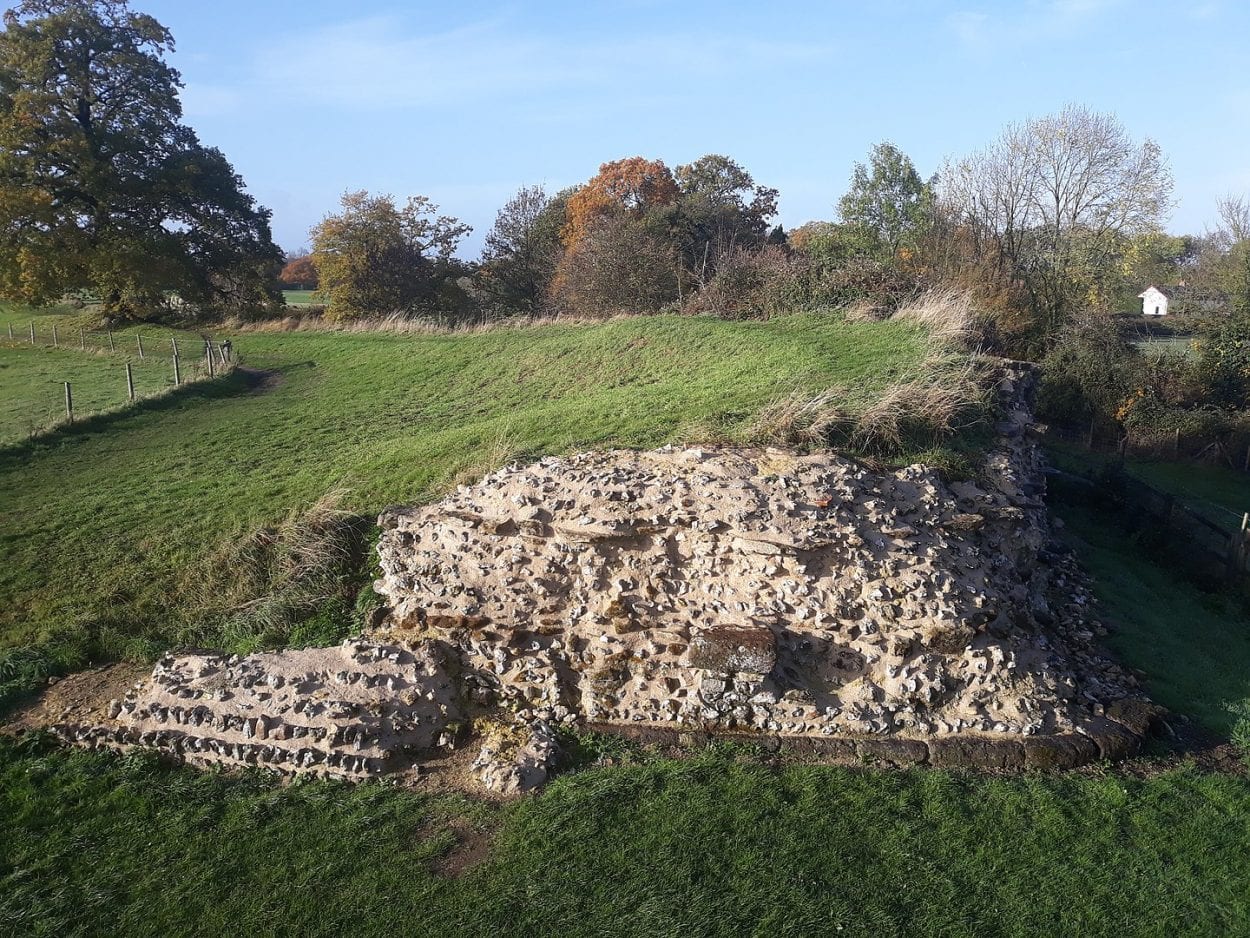Calleva Atrebatum, also known as Silchester Roman City was a large Roman settlement located near the modern-day village of Silchester in Hampshire, England.
Calleva Atrebatum was the centre of the Iron Age Atrebates, a Belgic tribe that migrated from Gaul around 54 BC and was ruled by successive client Kings of Rome before becoming absorbed into the new Roman province of Britannia after the Romans invaded in AD 43.
The Iron Age oppidum was constructed on a gravel plateau spur around 20-10 BC, comprising of a series of defensive earthworks that covered an area of 79 acres. Excavations have revealed various period structures that include several roundhouses, wells, rectangular buildings, and a large gathering hall.
With the arrival of the Romans, there was a movement towards organising urban spaces into a grid-like street plan to imply a Romanised way of conferring civilisation. The Iron Age oppidum was reorganised into a system of rectilinear gravelled streets that stood at the junction of a number of major Roman roads connecting Calleva Atrebatum to Londinium (London), Venta Belgarum (Winchester), Noviomagnus Reginorum (Chichester) and Dorcic (Dorchester).

Calleva Atrebatum grew into a major commercial centre for trade and the administration of taxation in the region. The city included a forum, basilica, temples, workshops and shops, thermal baths, villas, and a large amphitheatre that could accommodate between 3500-7250 spectators.
In AD 200, construction began on a rampart of earth and clay that encircled the city. This was later reinforced with a stone wall in AD 270 that covered a length of 2.4km. Why the wall was constructed has been somewhat of an enigma for archaeologists and historians.

Calleva Atrebatum was no longer a frontier settlement, nor was there any evidence of a sizeable threat to the inhabitants. It is possible that the withdrawal of the Legions by Clodius Albinus in AD 196 (to claim the title of Emperor) led to the fortifications being erected in response to the sudden absence of the Roman military in the province.
Occupation of the town continued into the beginning of the fifth century, possibly extending to the late sixth-early seventh century. Unlike most major Roman settlements in southern England, Calleva Atrebatum never re-emerged as a substantial settlement, but instead became a small medieval village until it was deserted around AD 1400, possibly as a result of the black death plague that devastated medieval England.
Header Image Credit : Carole Raddato







